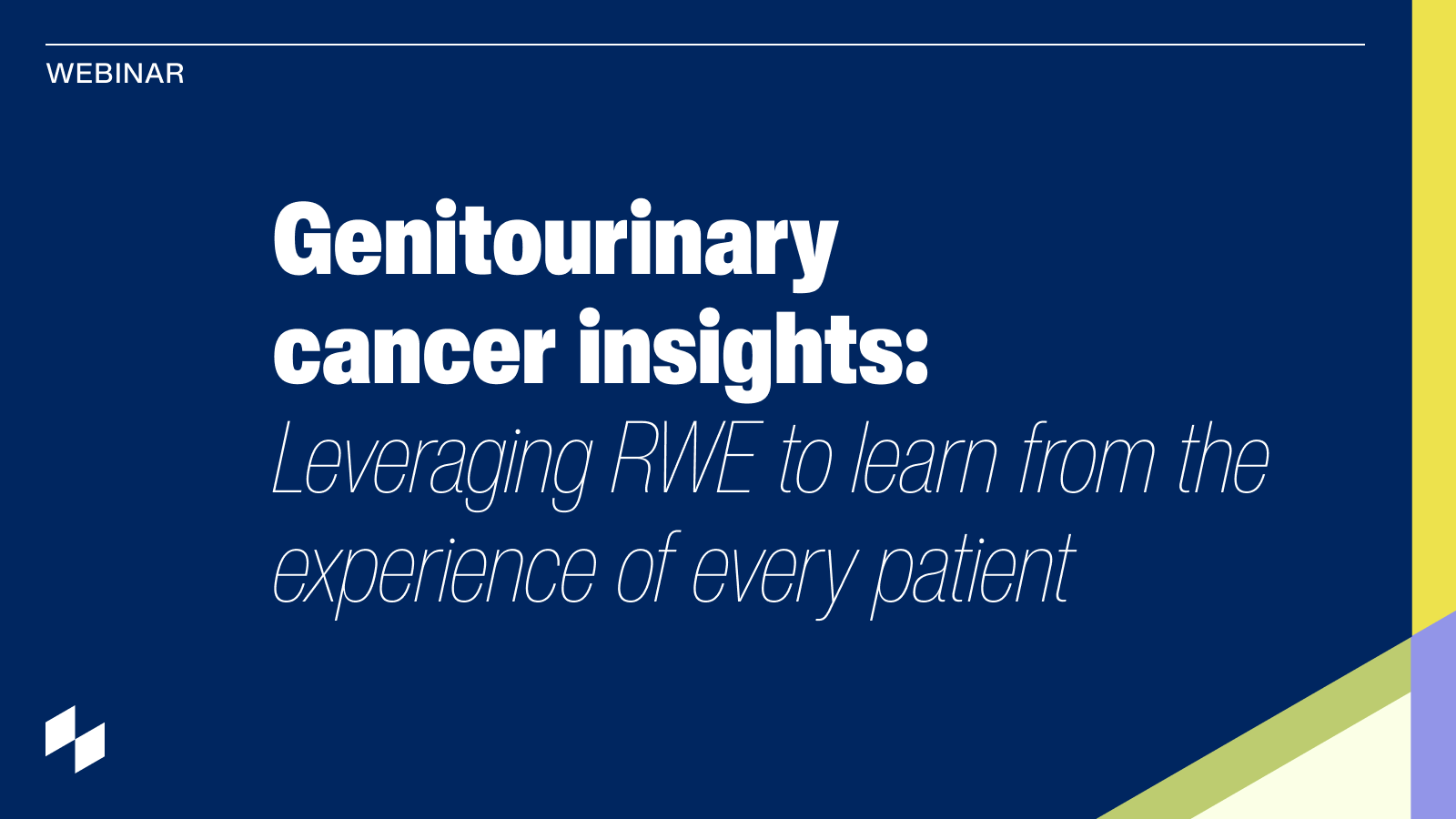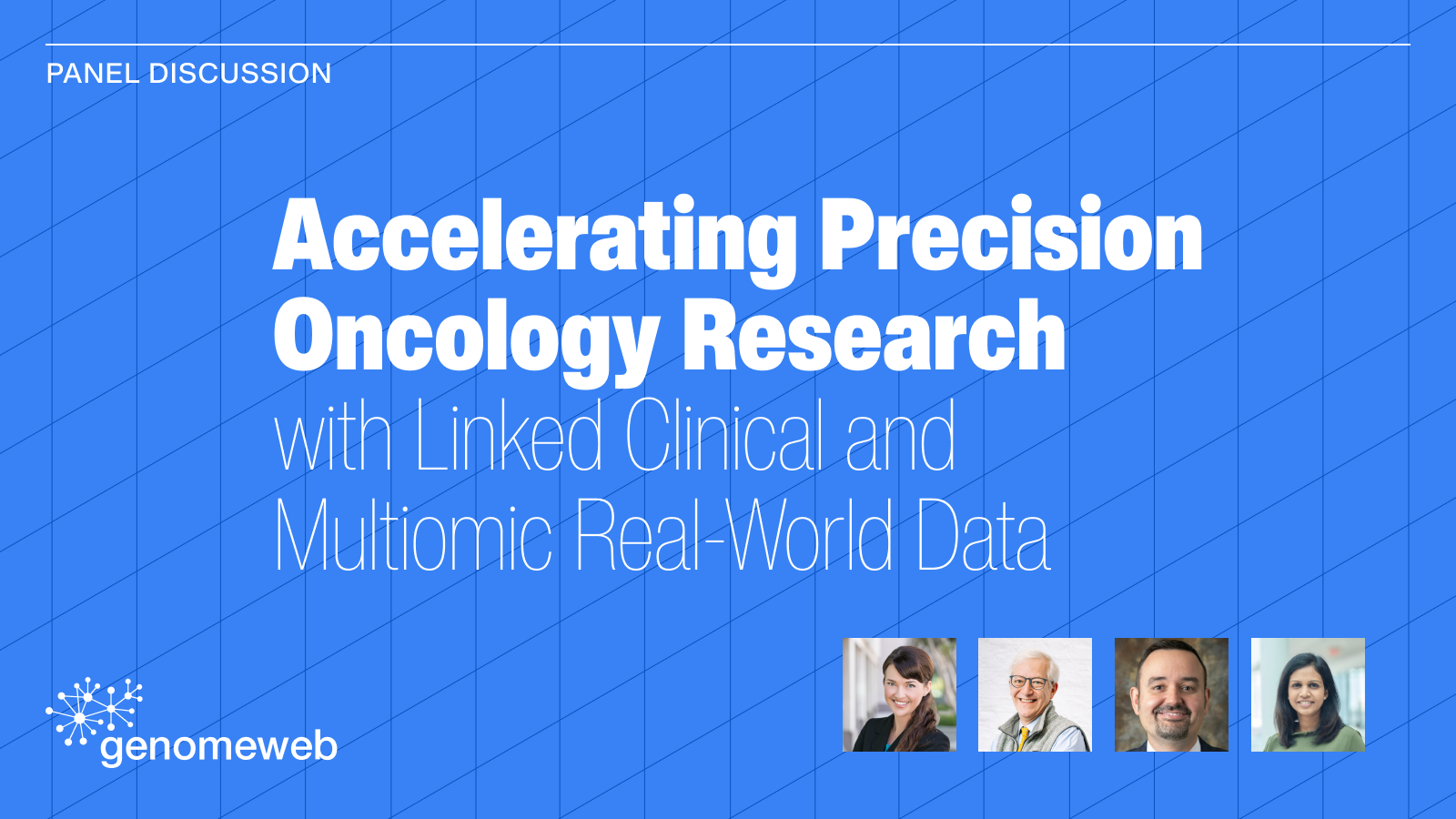This talk is part of the ResearchX session: The role of real-world data in tumor-agnostic drug development.
Sections include:
- Tumor site agnostic drug development: A genomics perspective
- Prevalence of TMB-H and association with survival in patients with less common solid tumors
- Characteristics and outcomes of real-world patients with MSI-H solid tumors treated with pembrolizumab
- Trends and challenges in tumor-agnostic drug development

Transcript
Jeff Venstrom: Yeah, thank you, Olivier. And thanks to the Flatiron organizers for the opportunity to speak on this really important topic. Next slide. In the brief 10 minutes that I have for my component, I'll just give a high level overview of a clinico-genomic perspective on tumor site agnostic drug development, a topic that I'm particularly passionate about. Next slide.
The obligatory disclosure information. I am an employee of Foundation Medicine. And I will not be addressing or be able to answer any questions related to any pharmaceutical products. The major reason why I'm so excited about talking about this particular topic around tumor-agnostic drug development is because I really think it's a major breakthrough in the 21st century for really making biology actionable.
The human genome project and our ability to sequence all of our genomes, and particularly the genomes of cancer patients came with a lot of promise and a lot of hope. And I think to some extent, there's been a disconnect between the promise of mapping the genome and the specific actionability of genetics in the clinic, and in the clinic particularly for cancer patients. By and large, we still march forward treating patients in a tumor site-informed paradigm where a patient has lung cancer, breast cancer, non-small cell lung cancer or any other subtypes. And we decide on therapies based upon the histology.
What the recent tumor-agnostic approvals have really done is added a fundamental and foundational new paradigm to oncology decision-making, that really brings in the biomarker, that brings into genomics, that complements the established and the continued role of tumor site-informed treatment decisions with biology. And with really important mechanistic biology driven really by insights around how recent drugs work, and how the biology is driven by different drivers. Focusing more on this topic for drug development, I've aggregated four key points or perspectives from a clinico-genomic perspective for this audience to consider as we're thinking about doing more of this really challenging drug development pathway for tumor-agnostic approvals.
Next slide. The first core points that I wanted to bring to this audience and have a conversation around is the importance of knowing your biomarker. These are three key considerations as we're thinking about doing more tumor-agnostic drug development is one: understanding the biologic hypothesis. I think tumor mutation burden is a great example of understanding the role and the ability in a probabilistic manner to predict immunogenicity of a specific tumor. And to understand that connection between this biology and the mechanism of checkpoint blockade, for instance, was really foundational for driving forward the success ultimately of TMB as a biomarker and as tumor-agnostic approval.
TMB of course is an imperfect biomarker. It doesn't capture all components of a tumor's immunogenicity, but it's fit for purpose. It was ultimately successful for getting the approval and I think can actually help patients. There's still a lot more that we need to understand around the immunogenicity of tumors, and the ability to appropriately select patients for checkpoint blockade. But I still feel like the foundational understanding of a biologic hypothesis for TMB and tumor approvals is really fundamental to success.
Once you have that mechanistic hypothesis, making sure that you have an accurate definition of the biomarker if it's a genetic biomarker of clarifying how you're defining a specific alterations as actionable, and thinking about the potential need to update that definition of actionability, based on things like updates of known and unknown variants within the genome. There's a fundamental role for big data and real-world data to understand both the prevalence of the biomarker that you're chasing for these tumor-agnostic drug development opportunities, in addition to the potential prognostic effects.
Chelsea will actually get into a very specific and fascinating study, looking at the prognostic role, specifically for TMB. The real-world prevalence for specific biomarkers will help you design your statistical analysis plan, anticipate challenges for accrual, understand putative mechanisms of resistance, and really help inform the design and execution of your tumor-agnostic drug development program. And finally, trying to get a sense of any type of disease specificity or where potentially the biologic hypothesis might break down and specific context is also important, as you're thinking about embarking on this adventure for tumor-agnostic drug development.
Next slide. A second key consideration as you're planning these drug development pathways is the platform or platforms, plural. And the importance of trusting that platform, the importance of the performance and the reliability of a platform that you're choosing for this drug development opportunity. Making key decisions around for instance, is there an opportunity to use a liquid genomics platform, perhaps in addition to a tissue genomics platform? Or what are the trade offs, the pros and cons of using one versus the other? What type of analytical validation does the platform that you're implementing into your tumor-agnostic drug development trials... What degree of analytical validation do we have specifically in specific diseases and specifically for different genetic alterations?
Is there transparency in your platform? Is there ability to understand when the calls are erroneous? When the calls are complicated, and need further follow up? How much clinical utility has been established for the platform that you choose for your tumor-agnostic drug development platform? Are there opportunities to leverage the clinical utility that's already established, perhaps in other tumors or for other drugs to complement the success of the tumor-agnostic drug development trial that you're planning?
Is there external validation? Does the platform work in multiple different hands? Is it published by multiple different groups? And is your platform or the partner that you're choosing for this drug development, adventure committed to continuous improvement, committed to updating the definition when necessary, and as our understanding of the target evolves, and in the definition process for your biomarker? Is it adaptable, and do you have reproducible algorithms for instance, if you are reliant upon a computational biomarker? Next slide.
Third is to explore nuance. This is more of a nice to have. I feel like the first two features for your drug development program are critical success factors. Exploring nuance might be something that we plan as part of a post-marketing study, for instance. It might actually be fundamental to the success of the drug, particularly if there's significant disease nuance that you discover through assessing prevalence and prognostic data in the real-world setting as you're planning your specific trial.
Is there a need or an opportunity to think about disease-specific combinations, again, that you're learning because of these studies that you're doing with big data, with prevalence information for understanding the biomarker and understanding the co-mutations that come along with the biomarker that you're targeting and the need or opportunity to combine therapies?
Are you assessing performance and reproducibility throughout the drug development pathway? In phase one and phase two, are there opportunities to reassess the performance and reproducibility of your biomarker definition, of your cut off, of the assay performance? And are there opportunities through the drug development lifecycle, to assess interim results, and to think about the opportunity to update the definition or pivot? Next slide.
And then fundamentally, and finally, the importance of collaboration is so critical. This is a really challenging drug development paradigm. It's really important for patients, particularly patients that have rare disease. And getting this right and doing this carefully, collaborating both on the design and execution. From a statistical standpoint, regulatory standpoint, obviously, the genetics and clinical standpoint, bringing in your genomicist early to really help with that biomarker definition and knowing your biomarker, leveraging real-world data like the CGDB, the clinico-genomic database that fuses Foundation Medicine information with Flatiron, real-world outcome data, and granular clinical characteristics.
Again, to understand the prognostic and the prevalence information is really important for planning for success. And then thinking creatively and globally about the execution and often the challenge of targeting these rare populations and these rare patients for accruing into your clinical trial. Next slide.
And with that, I'll end and just remind the audience of the summary of what I talked about really briefly, again, from a high level around a clinic-genomics perspective. Fundamentally, I think, number one, know and trust your biomarker. Trust the platform that you're using for assessing your biomarker. Explore nuance, and then collaborate broadly. Thank you, Olivier, again, for the opportunity to speak.


